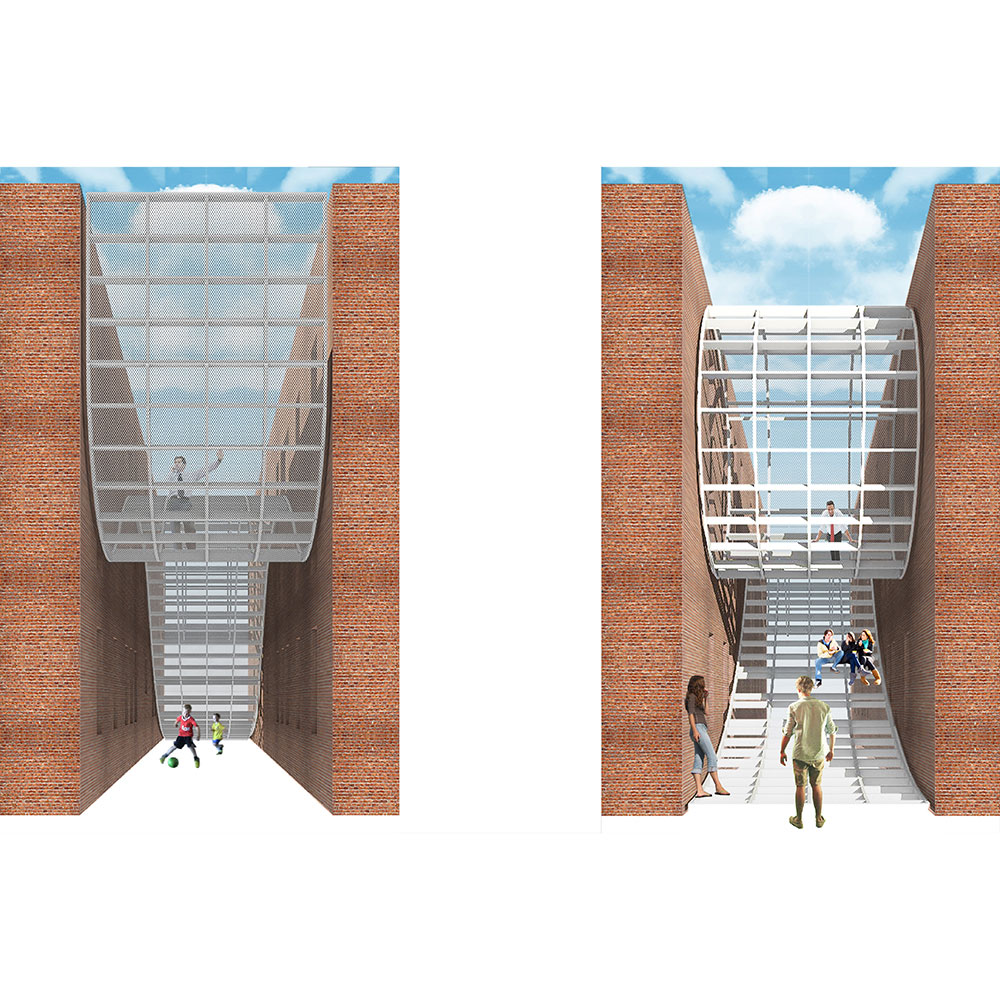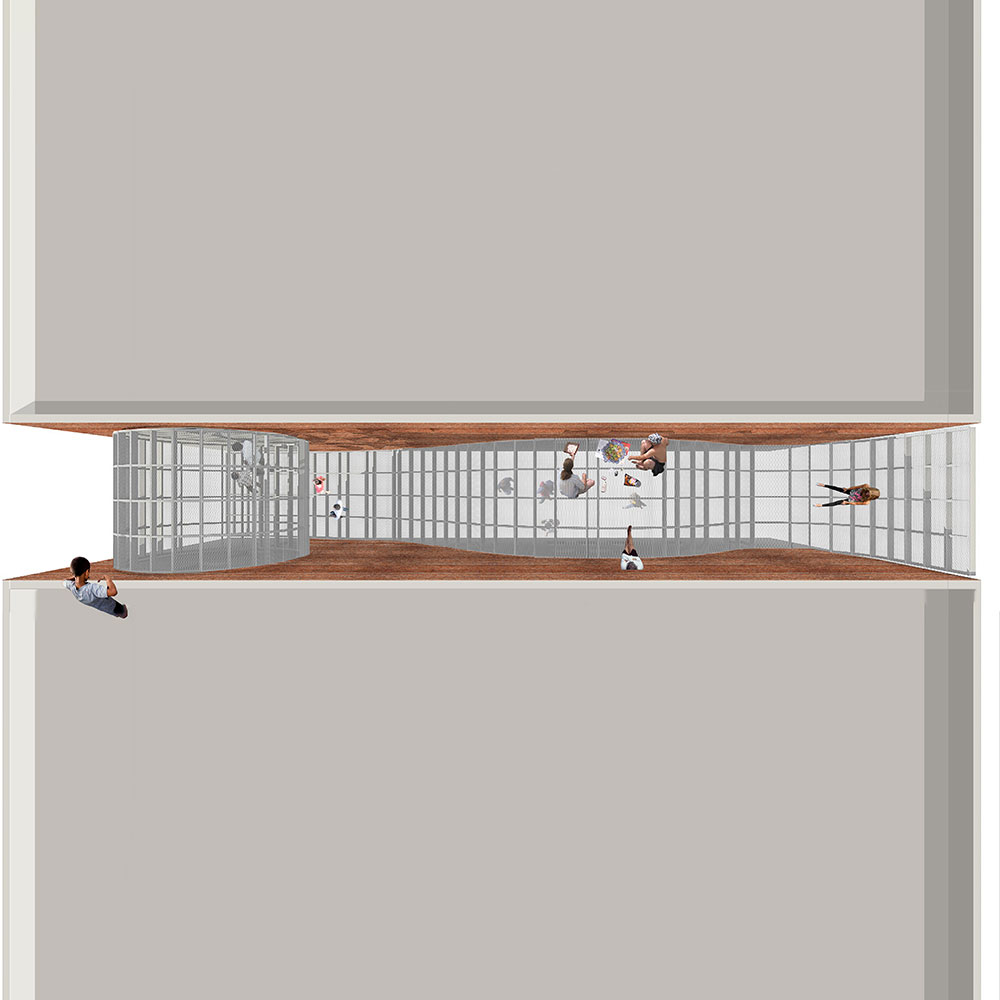Resembling a floating landscape, FRICTIONAL re-unites public and private space in the urban alleyway through architecture’s primordial tectonic – friction – with a paralleling, productive friction between private occupants using the space as their back porch and pedestrians using the alley for recreation.
Friction is seldom employed as tectonic today. Taking advantage of the unique site condition presented by an alley, pinned between two buildings, this project employs a system with one of the highest coefficients of friction – rubber on masonry – to create compression fittings that hold the entire structure to the adjacent walls, avoiding any other mechanical fasteners. Accessible from either side of the alley or via the adjacent buildings through windows, the design multiplies the landscape with a series of gathering spaces, each with their own vantage point, character, and sectional qualities.
The system itself is simple: heavy gauge steel studs are retrofitted with welded caps, threaded rods, and rubber-faced pressure plates, functioning as friction joists (the horizontal relative of compression columns). Between them, curved metal studs are placed 16” apart. Large sheets of galvanized, expanded metal are fastened to the surface to provide a structural skin. At the conclusion of the installation, the metal studs and expanded metal can be repurposed, with the adjacent buildings left unaltered.
FRICTIONAL can be employed as a system that can adapt to any site’s peculiarities, both spatially and structurally. Spaces can be optimized for views, site intensities, and even a diversity of neighborhood dynamics.
Client: AIA Tennessee and River City Company
Program: Cultural, Pavilion
Status: Complete
Size: 750 SF
Location: Chattanooga, TN
Team:
Architect: KM,A (Kyle May)
Images: KM,A


